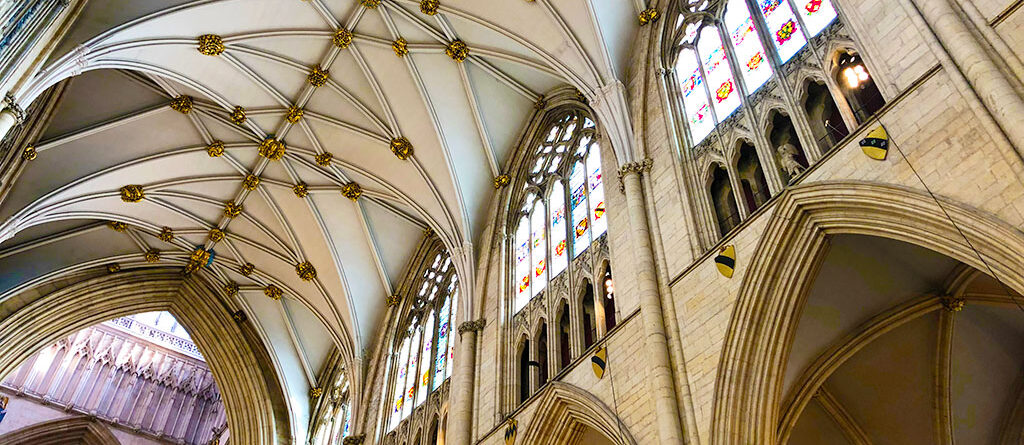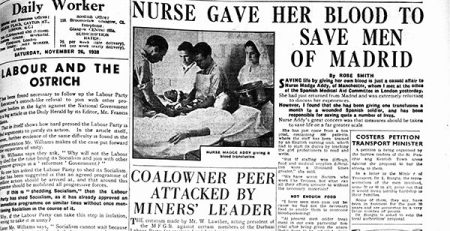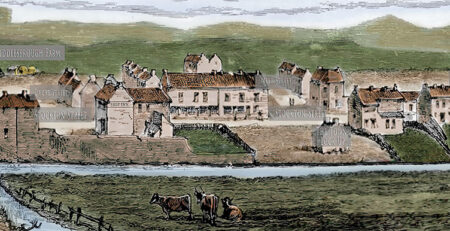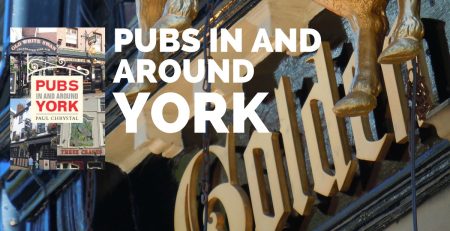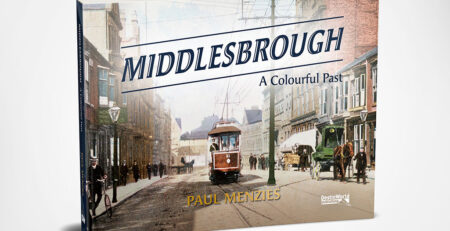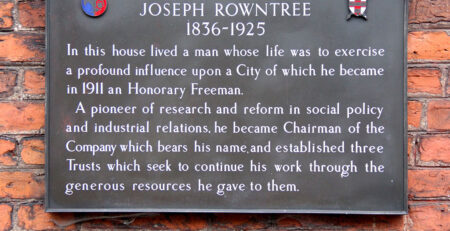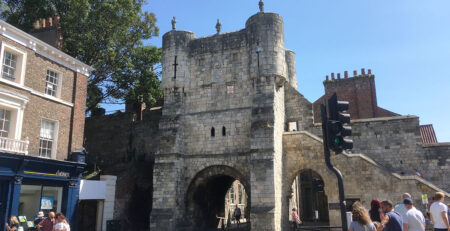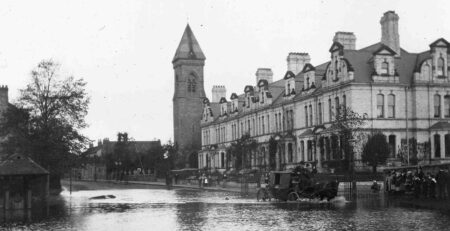10 Events in the History of York Minster
The life and history of York’s most prominent building
York Minster is probably the best known landmark in the city.
Its Gothic towers and great size loom over the city and can be seen for miles around; inside, still a place of worship, prayer and learning, it is also a huge tourist draw for the city.
This cathedral dedicated to St Peter is one of the largest in Europe and in its centuries of history has seen many important events, which we’ll uncover below.
1. The First Church – 627 AD
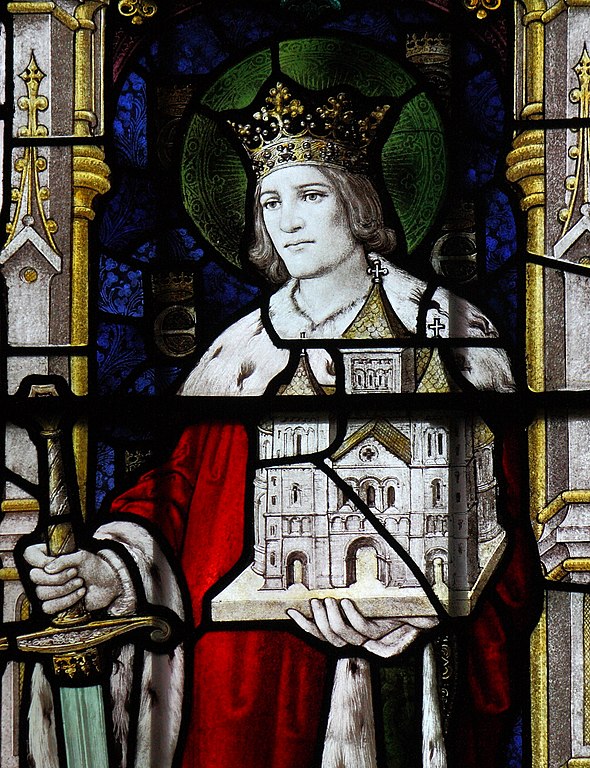
While the current building was completed in 1427, there is evidence of a church existing on the site of York Minster since 627 AD when a wooden structure was erected.
This had the important purpose of being the place where King Edwin of Northumbria was baptised.
It is known that a Bishop of York had existed since at least 314 AD, but the location of his chapel is not known.
2. The First Fire – 741 AD
After the wooden church had been built, a more substantial stone chapel was built in the 630s. The site was expanded over the coming decades to include a school and library.
However, in 741 the building was destroyed by a fire – a sign of things to come, as more infamous blazes would be endured in the building’s later life.
3. The First Big Building – 790 AD
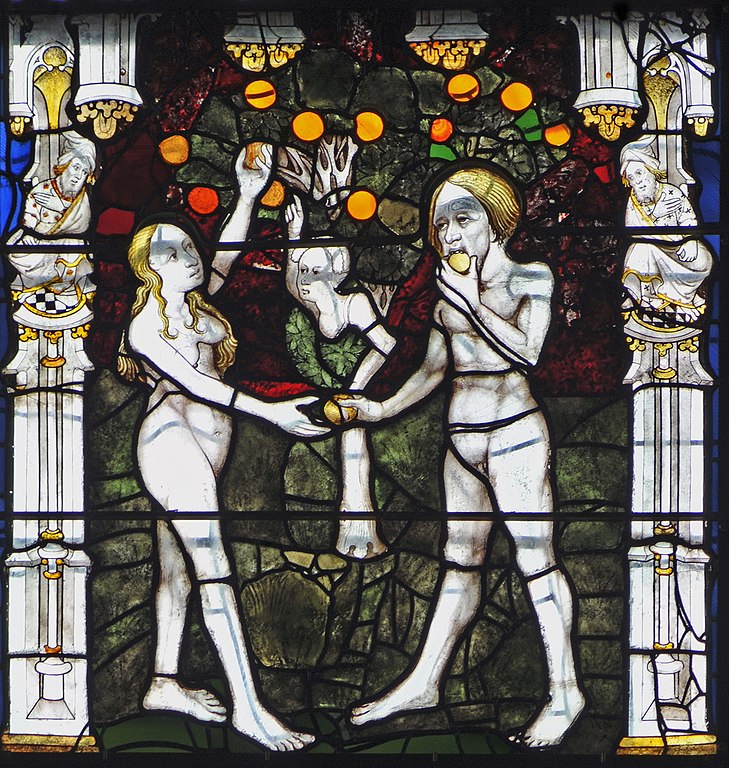
Following this first fire, a more substantial church was built in its place.
This time it included tall walls, pillars, gantries and thirty separate altars, which gives an indication of just how large it was.
York was sadly entering into a time of disruption, with the Vikings, Saxons and Northumbrians ruling the city over different periods 800s and 900s.
Whether the church survived or thrived during these attacks and different rulers is not recorded.
3. Harrying of the North – 1069
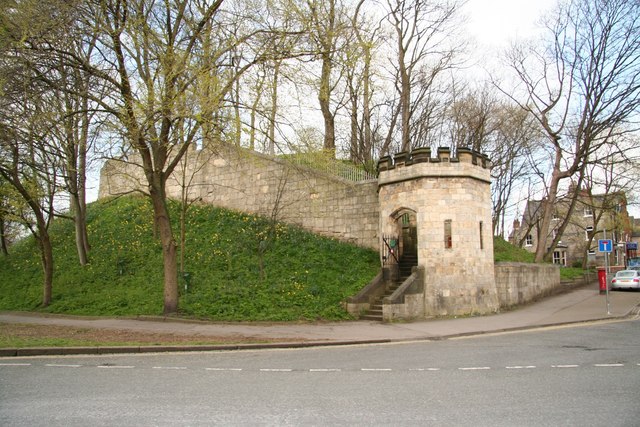
When William the Conqueror took the English throne, he set about subjugating the North, which was still influenced and controlled by these previous factions from Scandinavia, Wessex and Northumberland. This was known as the Harrying of the North.
In 1069, York’s church was damaged during the battles that ensued, and in 1075 invading Danes destroyed the church.
4. The Norman Cathedral – 1080
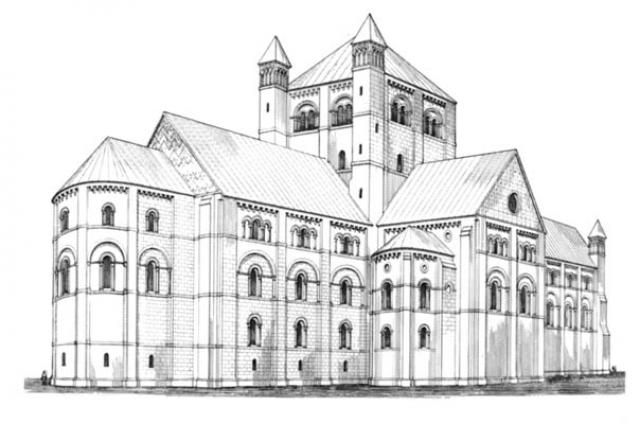
The church was rebuilt from 1080, this time in the Norman style to match the fashion of the country’s new rulers from France.
The 111m-long structure had red and white lines along its exterior, and even though another fire was experienced in 1137, it was repaired and further enlarged.
5. Gothic Arrives – 1220
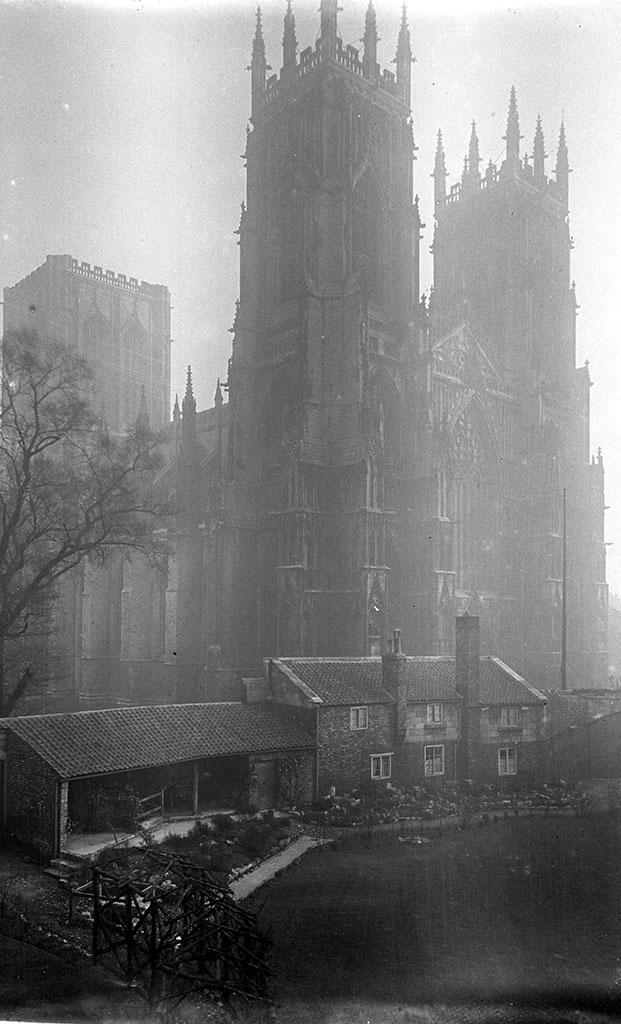
In the 12th century fashions had changed and Europe’s great cathedrals were now of a Gothic style of architecture. This included the great Canterbury Cathedral, which the new Archbishop of York, Walter de Gray, aspired to rival.
Thus, York Minster was rebuilt over a 250-year period to turn it into one of Europe’s greatest churches.
Built systematically from 1220, sections of the new building were completed one at a time, making use of the Norman foundations. It includes most of the structure we see today, including the central tower, transepts, large nave and chapels. The choir was the last part, started in the 1390s.
6. Central Tower Collapses – 1407

The new central tower of York’s Gothic Minster only lasted just over a hundred years.
It had been topped by a wooden spire, but in 1407 it collapsed dramatically leaving a gaping hole in the damaged building.
Work quickly commenced to strengthen the foundations and supporting piers, and the new central tower that we still see today was begun in 1420.
7. Consecration – 1427
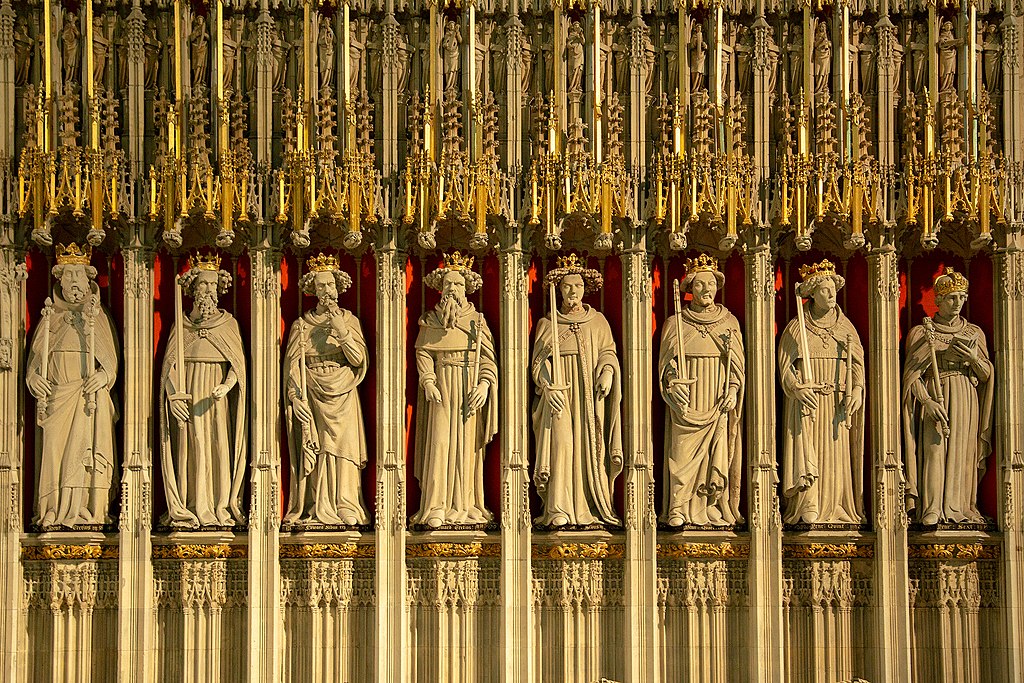
The completed Gothic Minster was finally ready to be consecrated in 1427.
The final part of the giant jigsaw, the two western towers, had been added through the mid-1400s after the central tower was rebuilt.
8. More Fires and Despair – 1800s
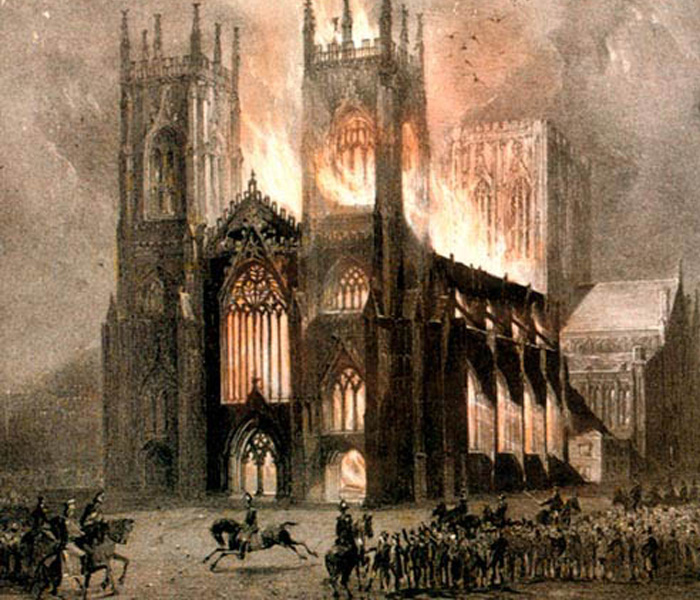
Through subsequent centuries York Minster endured the highs and lows of political reform and changes in accepted religion.
The English Reformation saw the buildings treasures looted, whilst the remaining hints of Roman Catholicism, like paintings, tombs and windows, were targeted during the 1600s.
Refurbishment took place in the 1700s and 1800s, but more fires in 1829 and 1840 left the Minster damaged and, in the latter case, partially roofless.
The building went through a period where services were no longer held, with heavy financial debts.
9. Another Fire – 1984
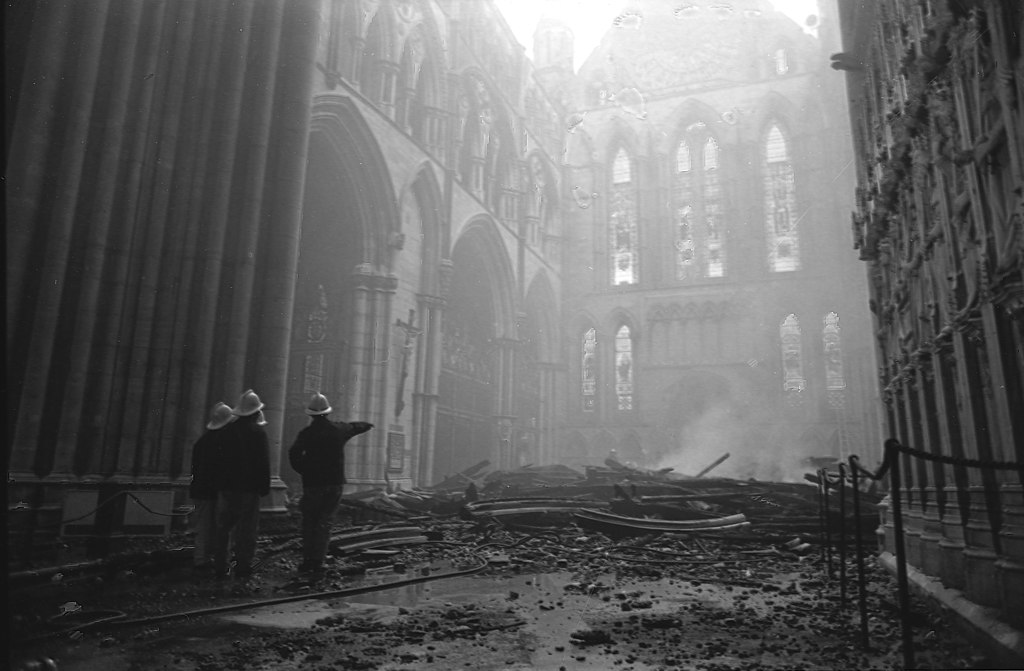
A chance lightning strike on 9 July 1984 is the accepted cause that led to the latest major fire to damage York Minster.
It happened during the early morning. The alarm was raised as the fire took hold, and firefighters battled for hours to bring it under control.
Part of their strategy to save the building meant the deliberate collapsing of the south transept’s roof. While all this was going on, staff and clergy worked tirelessly to remove priceless treasures from the building for safekeeping.
The famous rose window of the south transept was also severely damaged during the fire.
10. 21st Century Renovation – 2007-2018

During this period, major restoration works were undertaken at York Minster to repair the Great East Window and other parts of the building.
The stoneyard at York Minster has also been working tirelessly to renovate and replace worn stonework on the building, as well as its famous gargoyles and other statues.
So there you have it – ten important events which have shaped York Minster. Have you ever visited this incredible building? In it you’ll find so much to see and enjoy, and it continues to act as the centrepoint of Christianity in the north of England.
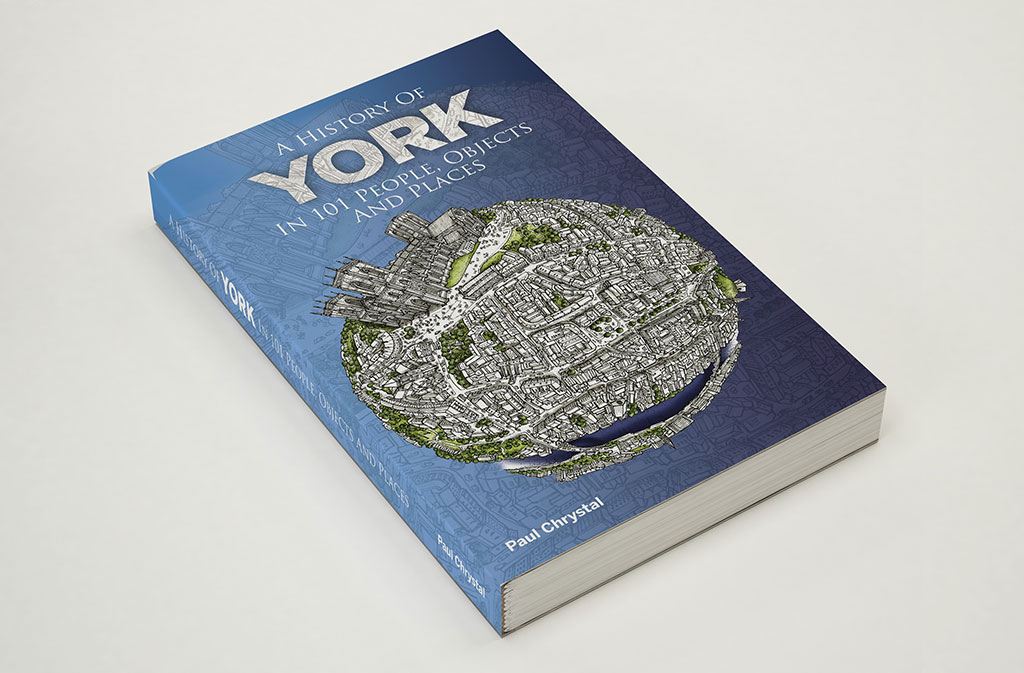
York in 101 People, Objects and Places
An accessible and dippable history of York told by 101 significant objects, people and places.
York historian Paul Chrystal takes you on a unique journey of discovery through some of the less well-known, more surprising stories connected with York, just as if you were ambling at a leisurely pace along the city’s gates (streets), through the bars (gates) and in and out of the snickelways (alleys), coming across this, that or the other.


